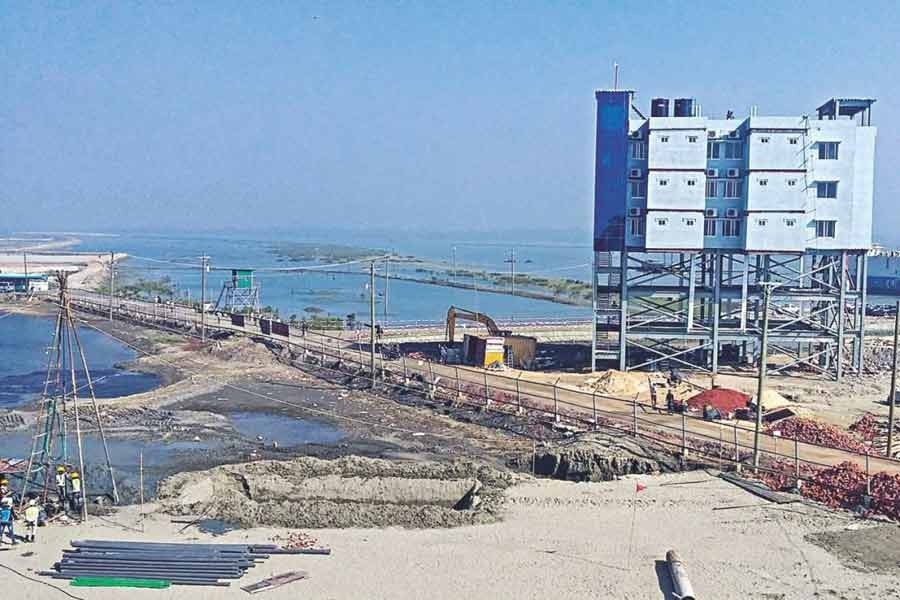
Published :
Updated :

Bangladesh currently boasts of three seaports, of which Chattogram Port alone caters to around 92 per cent of the country's trade cargo via the Bay of Bengal. The two other seaports, namely Mongla and Payra account for the remaining 8.0 per cent. Of these, Mongla has witnessed a gradual growth over the past 10 years, currently accounting for about 7.0 per cent of the sea-borne cargo, while Payra is still by and large in a preparatory stage with some question marks regarding its long-term viability. In this backdrop, the initiative by Chittagong Port Authority (CPA) to construct the Matarbari Deep Sea Port on the Maheshkhali Island, as reported by this daily on Saturday is undoubtedly a welcome move. With the Japanese International Cooperation Agency (JICA) funding Tk 132.53 billion out of the total estimated project cost of Tk 185.80 billion, the void of a deep sea port is poised to be filled by 2026.
Connectivity has been a buzzword in the domain of shared prosperity for quite some time in different regions of the globe. For South Asia, especially the sub-region of Bangladesh, Bhutan, India and Nepal (BBIN), enhanced connectivity over land, air and sea can bring about a sea-change in the region's socio-economic growth potentials. It is an area which offers enormous win-win opportunities for all relevant state actors as well as their peoples. Land-locked Nepal and Bhutan as well as the north-eastern states of India would get a huge fillip in the field of logistics and connectivity if they could use the sea routes via Bangladeshi seaports. The launching of Padma Multipurpose Bridge will also greatly facilitate this effort for enhanced sub-regional connectivity. In this backdrop, diversification of communication and logistic infrastructures like building additional seaport in the country's coastal belt will undoubtedly cushion the load of additional cargoes via Bangladesh and make the transit-cum-trans-shipment arrangements more viable and cost-effective.
The Chattogram Port formally launched its operation in 1888 and subsequently became the chief seaport for Bengal and the Assam region comprising the current north-eastern states of India during the British colonial period. On the other hand, the Mongla seaport in Bagerhat was founded in 1950, but its progress has been quite uneven with the pace of expansion picking up since 2010. The Payra seaport in Patuakhali has been the third venture in this category. However, construction of some structures like jetties, terminals, connecting roads and bridges is still ongoing here although the port was formally inaugurated in August 2016 as the country's third seaport. Besides, 75-kilometre-long capital and maintenance dredging of the port is expected to be completed in 2021 and the port is scheduled to go into full-fledged operation by 2022.
But renowned German environmental scientist Hermann Kudrass, who has been studying the sedimentation process in the bay and delta subsidence for over two decades and whose studies helped Bangladesh win the maritime dispute with Myanmar at the International Tribunal for the Law of the Sea, has warned in a newspaper interview that the Payra Port might have to be abandoned eventually as high sedimentation has been making the Bay of Bengal shallow. The first challenge here would be the dredging of 6.0-km-long channel with 15-meter draft to make the port accessible to ships. The second challenge would be to constantly guard the channel from getting refilled following tides and surges due to cyclones.
In this backdrop, opting for the construction of a viable deep seaport at Matarbari with 16-metre draft, double that of Chittagong port and far greater handling capacity as an add-on is undoubtedly a wise move.


 For all latest news, follow The Financial Express Google News channel.
For all latest news, follow The Financial Express Google News channel.